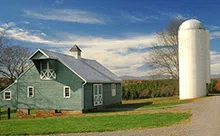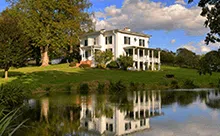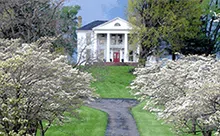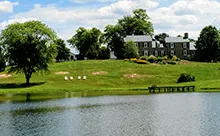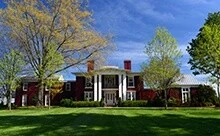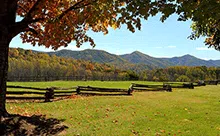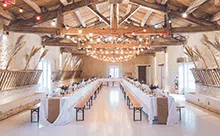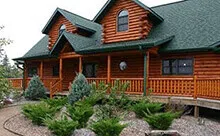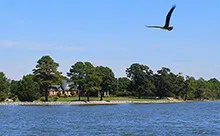Greek Revival Architecture in Virginia
Origins of Greek Revival Architecture in Virginia
The Greek Revival began in America, and particularly in Virginia, where large-tract landholders were numerous during the second half of the 18th century.
However, it was not for another two generations after winning independence from England that this style began to take root in a broader sense, replacing the previously understated forms of Georgian precepts. Greek Revival architecture was not widely evident in the broader landscape of American architecture until the mid 1800’s (1840-1860).
Some of the early roots of this transformational architectural movement are found in central Virginia. In the spirit of the new Greek independence (1830) and the general awakening which was occurring to all things pertaining to ancient Grecian antiquity, great Southern Colonial mansions began to spring up in Virginia.
The Greek Revival is evident today throughout the United States. However, it is particularly in the historic Virginia homes of some of the founding fathers that this movement took hold. It eventually defined our democracy and became the most popular architectural home style in America.
Key elements in Greek Revival architecture in historic Virginia property:
- Symmetrical floor plan
- Gable-end or pediment facade
- Colonnaded large front porch
- Stone and marble incorporated to accentuate a temple-like design
Historic Charlottesville and Central Virginia
Places such as Albemarle County and Orange County, Montpelier, Barboursville and Charlottesville, Virginia continue to reflect the awakening particularly as agricultural production in Virginia grew, and most notably after archaeologists began to unearth and bring the previously obscure marvels of ancient Grecian architecture to the fore of worldly consciousness.
A front gable-end design, and the bold clean lines of a robust colonnaded facade are good identifying features of Greek Revival architecture. This style would ultimately help shape the cultural and political identity of our new nation. The Greek Revival’s prominence in the American psyche and it’s place in our political history, are directly attributed to the collective product of Albemarle county, and the design principles applied to some of Virginia’s most historic properties, and in particular the buildings at University of Virginia in Charlottesville.
This is in no small part due to earlier Palladian extrapolations of Greco-Roman themes already taking place in America, and particularly in Central Virginia. Thomas Jefferson (1743-1826), espousing the democratic ideals of Ancient Athens, designed the University of Virginia and Monticello, his historic Albemarle county home, based on the work of Andrea Palladio (1508-1580). The Venetian architect’s book, Quattro Libri – a volume of practical and romantic architecture, Jefferson once called his bible.
Orientation of the home design was typically agrarian and almost always intended to maximize the visual effect of sweeping pastoral views, the gently rolling terra firma, set before the rich prominence of the blue ridge mountains.
Today Grecian stylistic influence remains one of the hallmarks of truly historic Virginia properties. The simple bold lines of Greek Revival architecture and the practical Palladian adornments which were carried over by the Southern planters made this style of Virginia home quite popular up until the onset of the Civil War.
Many nuanced extrapolations of Greek Revival architecture exist in the market, but true examples are unique and timeless. Fortunately, Charlottesville and central Virginia are home to some of the most recognizable examples of these historic homes and fine properties anywhere in the United States.



















